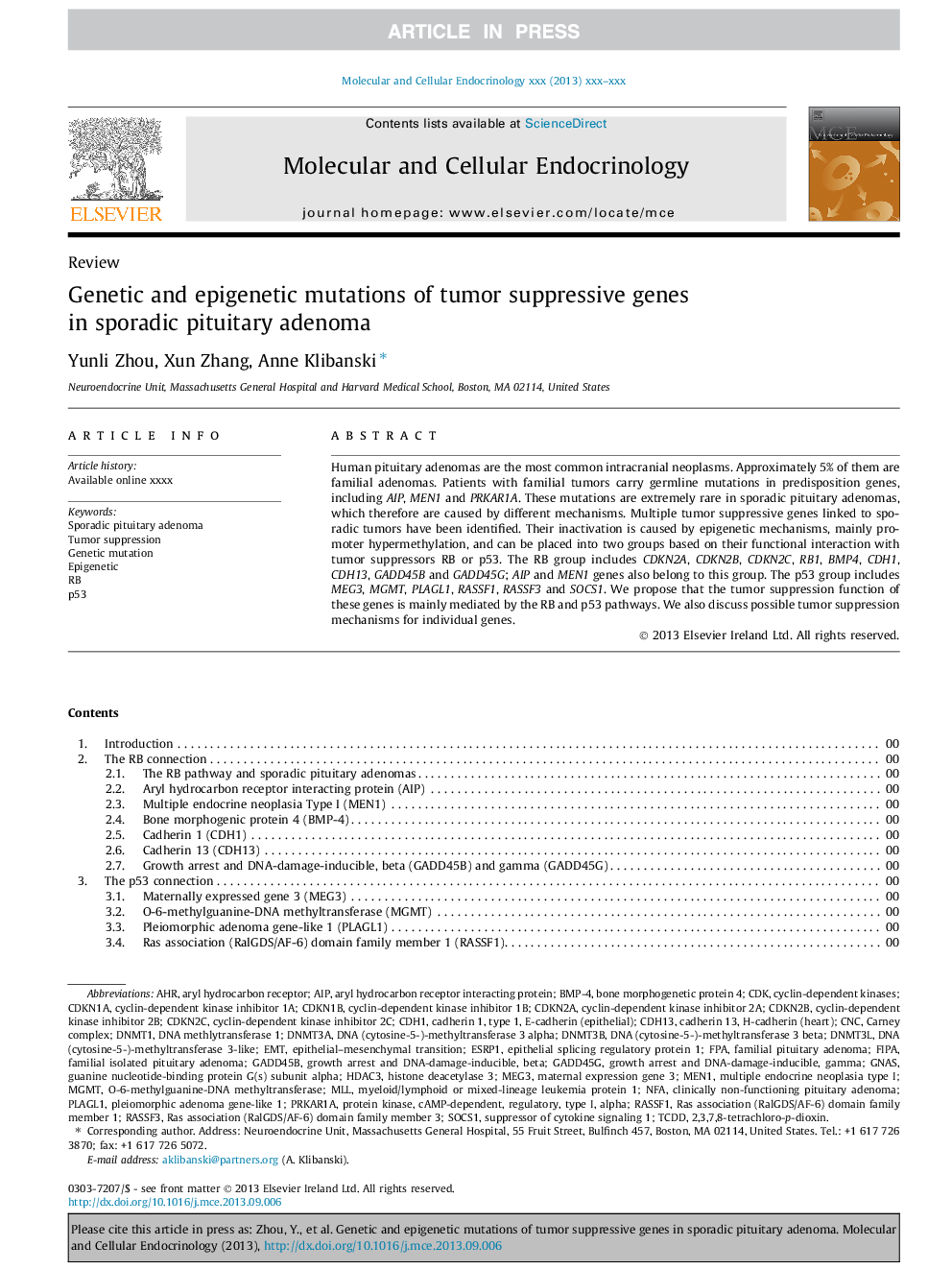| Article ID | Journal | Published Year | Pages | File Type |
|---|---|---|---|---|
| 8477210 | Molecular and Cellular Endocrinology | 2014 | 18 Pages |
Abstract
Human pituitary adenomas are the most common intracranial neoplasms. Approximately 5% of them are familial adenomas. Patients with familial tumors carry germline mutations in predisposition genes, including AIP, MEN1 and PRKAR1A. These mutations are extremely rare in sporadic pituitary adenomas, which therefore are caused by different mechanisms. Multiple tumor suppressive genes linked to sporadic tumors have been identified. Their inactivation is caused by epigenetic mechanisms, mainly promoter hypermethylation, and can be placed into two groups based on their functional interaction with tumor suppressors RB or p53. The RB group includes CDKN2A, CDKN2B, CDKN2C, RB1, BMP4, CDH1, CDH13, GADD45B and GADD45G; AIP and MEN1 genes also belong to this group. The p53 group includes MEG3, MGMT, PLAGL1, RASSF1, RASSF3 and SOCS1. We propose that the tumor suppression function of these genes is mainly mediated by the RB and p53 pathways. We also discuss possible tumor suppression mechanisms for individual genes.
Keywords
CDKN1BGNASCDKN2APLAGL1HDAC3CDKN1AGadd45bDNMT3AFIPACDH13AIPRASSF1CDKN2BDNMT3LPRKAR1ACyclin-dependent kinase inhibitor 1BGadd45gNFAMultiple endocrine neoplasia type Icyclin-dependent kinase inhibitor 2BSOCS1CDKCNCAHRp53TCDDMGMTMEG3CDH1BMP-4DNMT3BMLLMEN1Dnmt1FpAO-6-Methylguanine-DNA MethyltransferaseEpigeneticEMTGenetic mutationTumor suppressionsuppressor of cytokine signaling 1cyclin-dependent kinase inhibitor 1Acyclin-dependent kinase inhibitor 2Ahistone deacetylase 3bone morphogenetic protein 4Carney complexcyclin-dependent kinasesEpithelial–mesenchymal transitionaryl hydrocarbon receptor
Related Topics
Life Sciences
Biochemistry, Genetics and Molecular Biology
Cell Biology
Authors
Yunli Zhou, Xun Zhang, Anne Klibanski,
